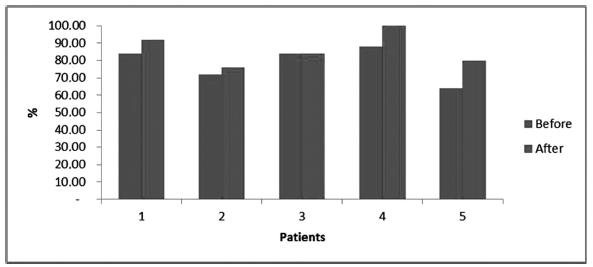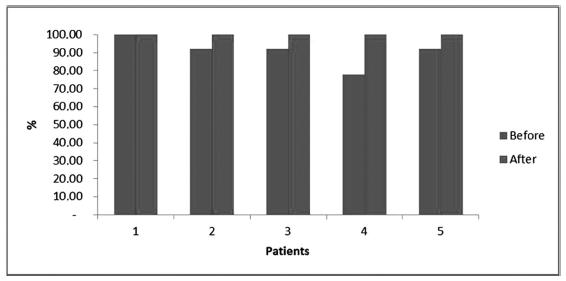Abstract
Introduction
The bone-anchored hearing aid (BAHA) is a bone conduction system that transmits the sound directly to the inner ear by surpassing the skin impedance and the subcutaneous tissue. It is indicated for patients with mixed, conductive and unilateral sensorineural hearing loss who did not benefit from conventional hearing aids (HAs). Although the benefits from BAHA are well demonstrated internationally, this field still lacks studies in Brazil.
Objective
To assess the auditory rehabilitation process in BAHA users through audiological, speech perception and tinnitus aspects.
Methods
Individuals with hearing loss were assessed before and after the implantation. The participants were subjected to pure tone audiometry in free field, functional gain audiometry, speech perception tests, tinnitus handicap inventory (THI) in open format, and to the visual analog scale (VAS).
Results
It was found that the participants benefited from the use of BAHA. The difference in the performance of the participants before and after the BAHA surgery was significant in terms of hearing acuity. There was no statistically significant difference in the speech perception tests. The tinnitus assessment showed that 80% of the participants scored slight tinnitus severity in THI after using a BAHA. Eighty percent of the participants classified their tinnitus as absent tomild in the VAS after the surgery.
Conclusion
Based on the results of the current study, we can conclude that the participants improved both the auditory perception and the tinnitus handicap.
Keywords:
hearing loss; bone conduction; tinnitus






